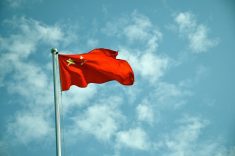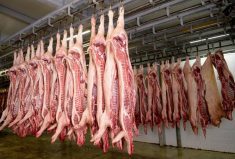Alberta cattle producers who temporarily move animals to pastures in Saskatchewan or British Columbia this spring or summer won’t need to pay inspection fees on the way out.
The provincial agriculture and rural development department (AARD) said Wednesday it will provide a $25,000 grant this year to Livestock Identification Services (LIS) to cover the costs of outbound inspection of Alberta cattle.
Traditionally, about 25,000 head of cattle move between the provinces for seasonal grazing. Alberta animals’ owners are usually on the hook for LIS inspection fees of $1 per head, and for any inspection fees charged by the province of choice when the cattle return to Alberta.
Read Also

U.S. livestock: Cattle futures surge as second screwworm case announced
Chicago | Reuters – Chicago Mercantile Exchange cattle futures rallied on Friday as two new screwworm cases were announced in…
The grant is expected to cover inspection by LIS for cattle that temporarily move into Saskatchewan or B.C. for the 2010 grazing season, starting in April.
According to Cliff Munroe, director of AARD’s regulatory services division in Edmonton, it’s not yet confirmed whether the province plans to provide a like-sized grant in 2011 or later years.
About 75 to 100 Alberta producers move their cattle west or east during the grazing season, mostly east to Saskatchewan, where they own or lease grazing land when conditions at home require it, Munroe estimated.
Alberta producers will still have to pay any inbound inspection fee from the province of choice when they bring their cattle home. As an example, Munroe noted Saskatchewan has a program similar to Alberta’s.
“Every animal that leaves (Saskatchewan) requires a Saskatchewan inspection,” he said Thursday. “You’ve got to have a brand inspection to make sure the cattle you’re shipping back are the ones you brought over.”
Surplus funds, if any, left over from the AARD grant would be returned to the province after grazing season is over.
“This initiative will reduce trade barriers between provinces, lower production costs and ease the regulatory burden for producers,” the province said.
The grant stems from what the province describes as a larger, ongoing review of the regulatory process for Alberta farmers, to root out “barriers that add unnecessary costs and reduce competitiveness.”














